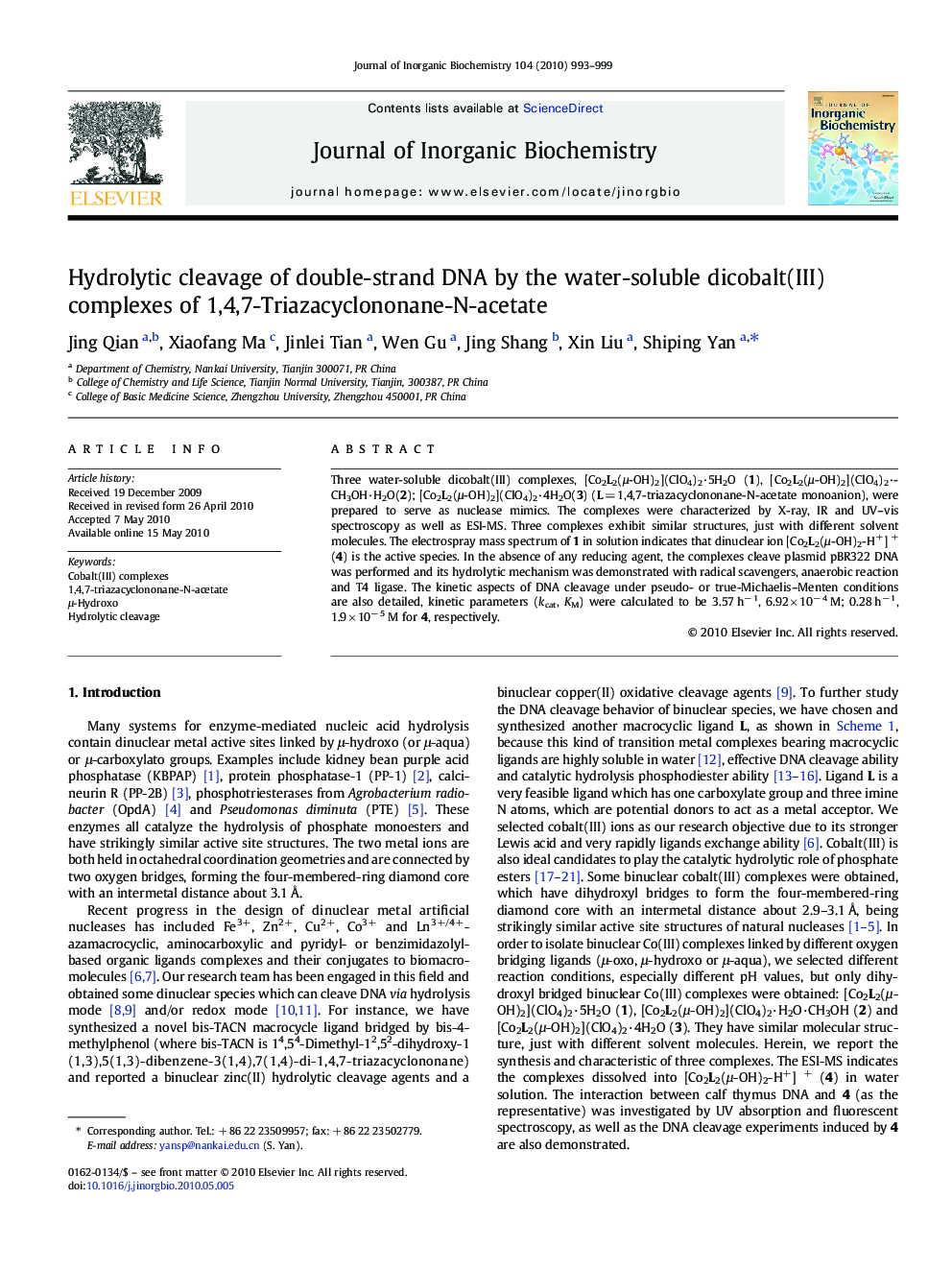| Article ID | Journal | Published Year | Pages | File Type |
|---|---|---|---|---|
| 1317181 | Journal of Inorganic Biochemistry | 2010 | 7 Pages |
Three water-soluble dicobalt(III) complexes, [Co2L2(µ-OH)2](ClO4)2·5H2O (1), [Co2L2(µ-OH)2](ClO4)2·CH3OH·H2O(2); [Co2L2(µ-OH)2](ClO4)2·4H2O(3) (L = 1,4,7-triazacyclononane-N-acetate monoanion), were prepared to serve as nuclease mimics. The complexes were characterized by X-ray, IR and UV–vis spectroscopy as well as ESI-MS. Three complexes exhibit similar structures, just with different solvent molecules. The electrospray mass spectrum of 1 in solution indicates that dinuclear ion [Co2L2(µ-OH)2-H+] + (4) is the active species. In the absence of any reducing agent, the complexes cleave plasmid pBR322 DNA was performed and its hydrolytic mechanism was demonstrated with radical scavengers, anaerobic reaction and T4 ligase. The kinetic aspects of DNA cleavage under pseudo- or true-Michaelis–Menten conditions are also detailed, kinetic parameters (kcat, KM) were calculated to be 3.57 h− 1, 6.92 × 10− 4 M; 0.28 h− 1, 1.9 × 10− 5 M for 4, respectively.
Graphical AbstractThree μ-hydroxo dimmer complexes were designed and characterized to serve as nuclease mimics. DNA cleavage promoted by the complex was demonstrated to occur by a hydrolytic ways double-strand pathways.Figure optionsDownload full-size imageDownload as PowerPoint slide
